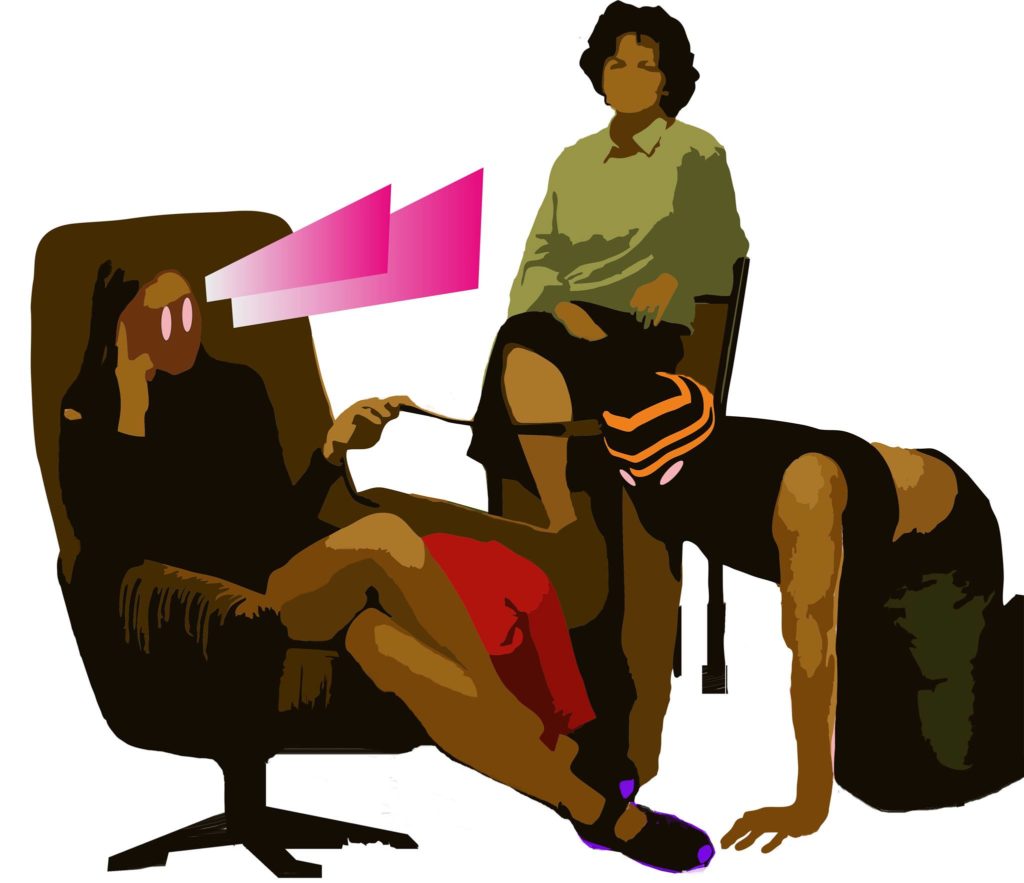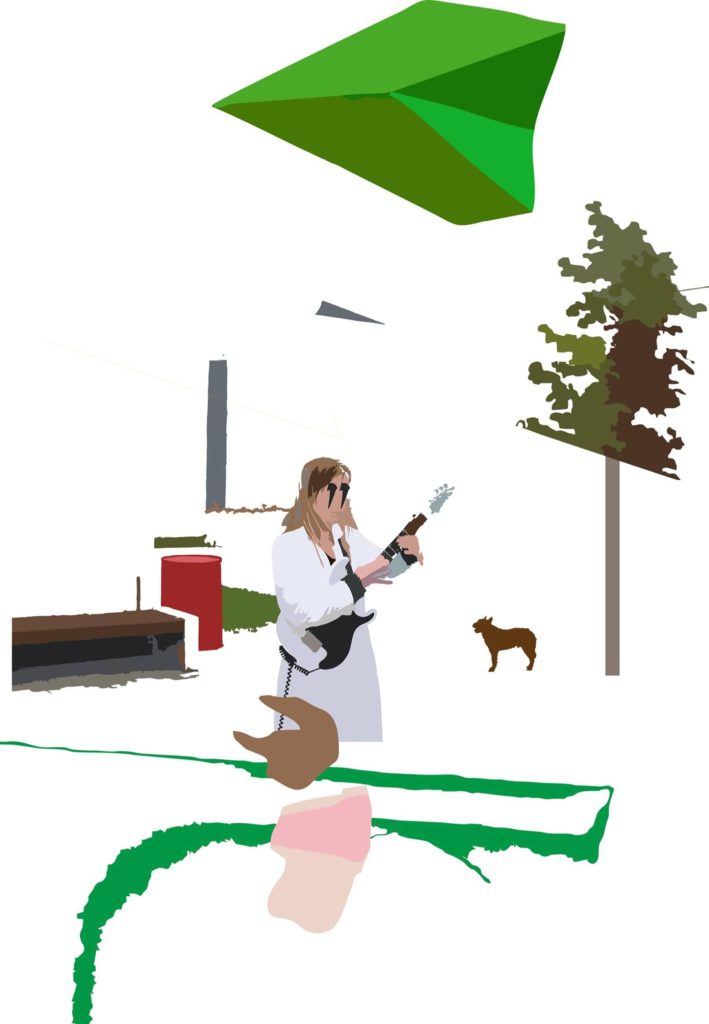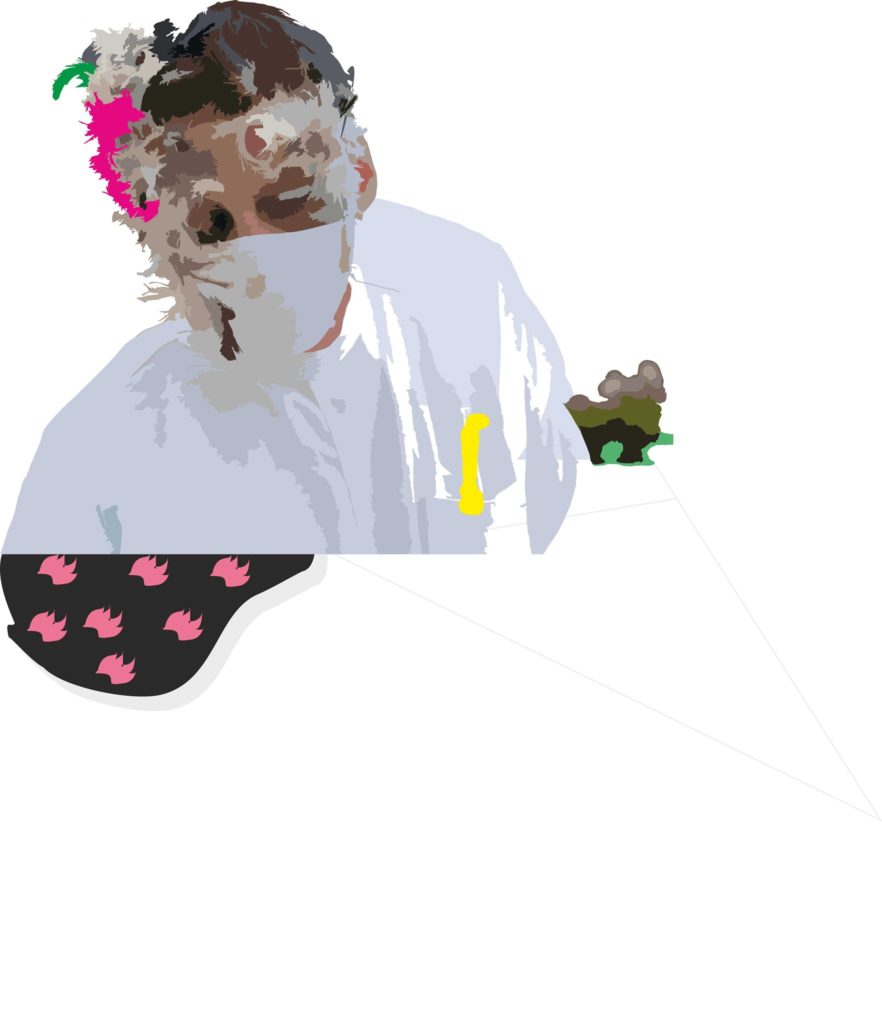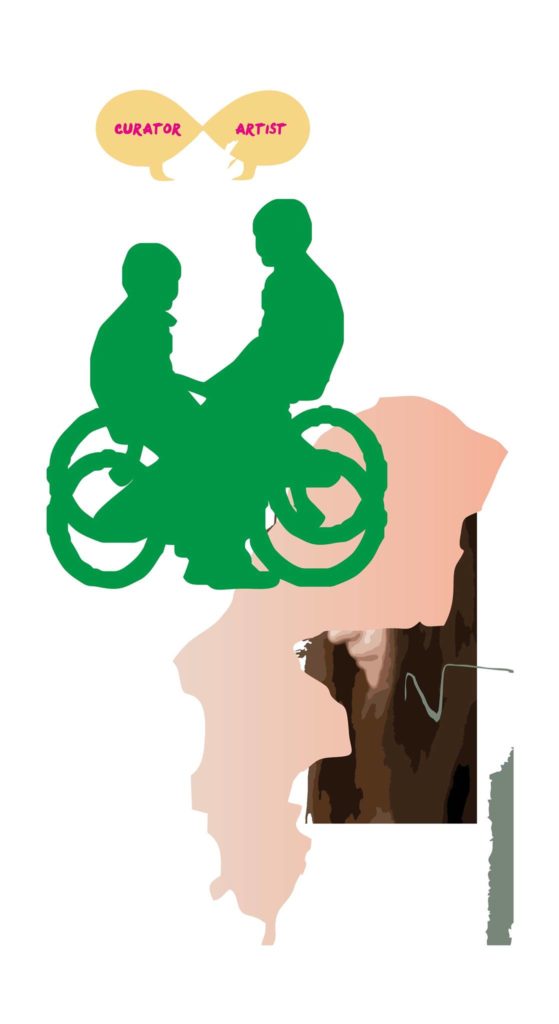Burn Out Curator—a Fair Sacrifice?
Maria Kotlyachkova & Alexander Tsikarishvili
Collecting, describing, gathering, cataloguing, researching, displaying, planning, organizing, interpreting, documenting, educating, fundraising, marketing, loaning, handling, networking, budgeting, forecasting, reporting, setting, interviewing, hiring—doing all of this with a forced smile, thankful and emotionally invested, almost always with no pay or overtime that no one supports. A young curator. The contemporary art world as a seemingly religious enterprise demands sacrifice—as all Gods live on blood and worship. Unlike a ritual death, the victim of curatorial labor should be engaged and highly organized. His / her labor is not only physical, intellectual, symbolic—but emotional yet on-the-surface (visitors, funders, suppliers) and deep acting (artists). Scientific evidence supports that the co-occurrence of emotional work and organizational problems lead to high levels of burn out.
Recently, freelancing has been equated with precarious, unpredictable activity where success depends on factors beyond one’s control; materially and immaterially insecure, the role is temporary. It’s like a lottery, my young fellow, for take a small step in the wrong direction—your reputation is wasted. Cross-sectoral direction is demanded—a lifetime of learning ever- changing art historical, philosophical, anthropological and linguistic dogmas.
In developed worlds, curatorial burn out is associated with the quality of working conditions, interpersonal relations, unregulated workload and role conflict. This conversation is with the young burn out Saint Petersburg-based artist and curator Alexander Tsikarishvili. This text can be interpreted as an abstract one dimensional sculpture—where ashes and red sticky liquid are scattered and spread on the pages.

Maria Kotlyachkova: You consider yourself to be a burn out curator. How did this manifest? Is it a sacrifice for a message into space—an offering for some God, energy, moment? If it is an exchange, what is your payment (if immaterial, then perhaps symbolic)? In ancient Greece, priestesses were given drugs to unquestionably perform rituals. Which drug were you zonked with? Is there a Heaven and Hell for curators? How do you imagine each realm to be?
Alexander Tsikarishvili: Who are curators? Stones, people, scientists, philosophers, coordinators, managers … crutches? What do they eat? Everything that normal people consume: rice, oats, fables, extracts from the pancreas of a sucking pig, pasta, carpaccio (Vittore Carpaccio), saltbush, painkillers, Dimethyl Ether, Benzoylecgonine, Cocaine bush. The female species is mainly herbivorous; they hardly consume alcohol, instead drinking birch broom decoction (which is used in the sauna by its Majesty Culture). Rarely do they allow themselves a glass of white wine on big occasions—with an octopus, of course. If they drink with an octopus, almost always alone, then they have few friends (speaking of both a female curator and octopus).
The male species possesses strange pointed heads. The older ones are full of pathos and overloaded with knowledge (at least, so it seems to them, and they never miss an opportunity to demonstrate), young ones are lost, as are “normal” people. Curators are common people. Curators feed from books, other people’s ideas and words, that which is written in black-and-white.
Where are curators born? Where do they belong? They are born everywhere, rootless, yet not “citizens of the world.” Castaways—but well-bred. Russian curators. All are stoned by the crowd, but a Russian curator receives the largest stone. Russian? «Belong to those nations that seem not to belong to the cast of the humankind, but exist only to give some important lesson to the rest of the world.» Often, curators are dodging. They want to eat, drink, pay a visit to a friend. Fuck these poplars and currants.

«Ninochka, I want to go back to our hotel room at Burj Al Arab. I am tired, like a bourgeois Arab.»
«Seryozhenka,1 I am so exhausted by these artists, I cannot take it anymore, they are like idiots, I do everything for them, I don’t love art anymore, because of these bitches.»
Why do curators burn out? Like others. They cannot fulfill themselves; they are getting old and tired. If they haven’t yet experienced burn out, then they keep silent because it soon approaches. Smart burn out curators retreat to a forest, bury themselves under autumn leaves, fall asleep under a tree. What unites curators and octopuses? Both squirt out ink.

Leningrad. Rain. Dacha2 in the suburbs of Leningrad. Apple trees drop tears on dacha’s traditional square meters. Common Russian scientists do not know anything about curators. Zikkurat from metal roofs is polished by the rain—transformed into an obelisk. Sun activity measures the characteristics of the Earth’s magnetic fields. Captain, how shall we deal with this?
Does a curator burn—or not? Perhaps, a curator must be made of stone (in contrast to the artist). The artist is burning; he / she is wooden, turfy. I am an artist and curator. It is a bad combination. Whom to please—yourself or yourself? Who should leave? Me? A curator is an average person. He / she has his / her own Heaven and Hell—silence or in constant monologue.
I am an artist and curator. I am between two fires.
«Yes, Ninochka, yes, Seryozhenka, I am here—not in Baden-Baden with a glass of rosé Weissherbst and naked mineral ass.»

I am at a dacha of scientists. Young girls are on the Russian TV channel «NTV» saying that the Cataclysm is wallpaper glue. Obviously, this is not true. The artist feels the Cataclysm, feels with his gut, he knows it because it is familiar. When everything burns, when it is painful. The curator is not obliged to feel it; he knows exactly what the Cataclysm is—but only because he read about it.
It is important for a curator to define and indicate at which moment a can looks at an artist, and at which moment an artist looks at a can. A curator must know the game’s rules and be a grindstone—to be like water.
Flecks are floating on waves, a boat, a black wet submarine bobs up, its ergonomic parameters remind of a dolphin, overturns a frigate with an artist, sinks the can, leaves foam and endless number eight looking circles.
A curator is just a person. Black and white, paper and ink. What is being sharpened by what—remains individual.
Airplane with human soul, stove, vodka, sauna, Jesus, «black square», one-and-a-half ton truck, shop window with Georgians out of clay, a loaf of bread—all of it upholds a suprematist code, which will grab you or let go forever.

Curator, curator, curator, curator, curator, curator, curator, curator, curator,
Artist, artist, artist, artist, artist, artist, artist.
Curator for an artist, as a driver for Vera. 3
Curator for Vera, as an artist for Love.
Vera and Love—curators of drivers. 4
Wishing you a safe trip, dear curators, my wonderful artists.

p.s.
The car follows a sunny road, birches, it smells like gasoline, birds are singing. All people have a special sound—all different. Artists sound even stronger. And now: rear, violas and squeaks, nightingales, dog howling, rustles, sound of plates, whistlers. A curator must tune in to the artist—not put on a semblance. Otherwise, it is unfair. He / she should hear and recognize the voice of the artist and sing together.
All rights reserved.